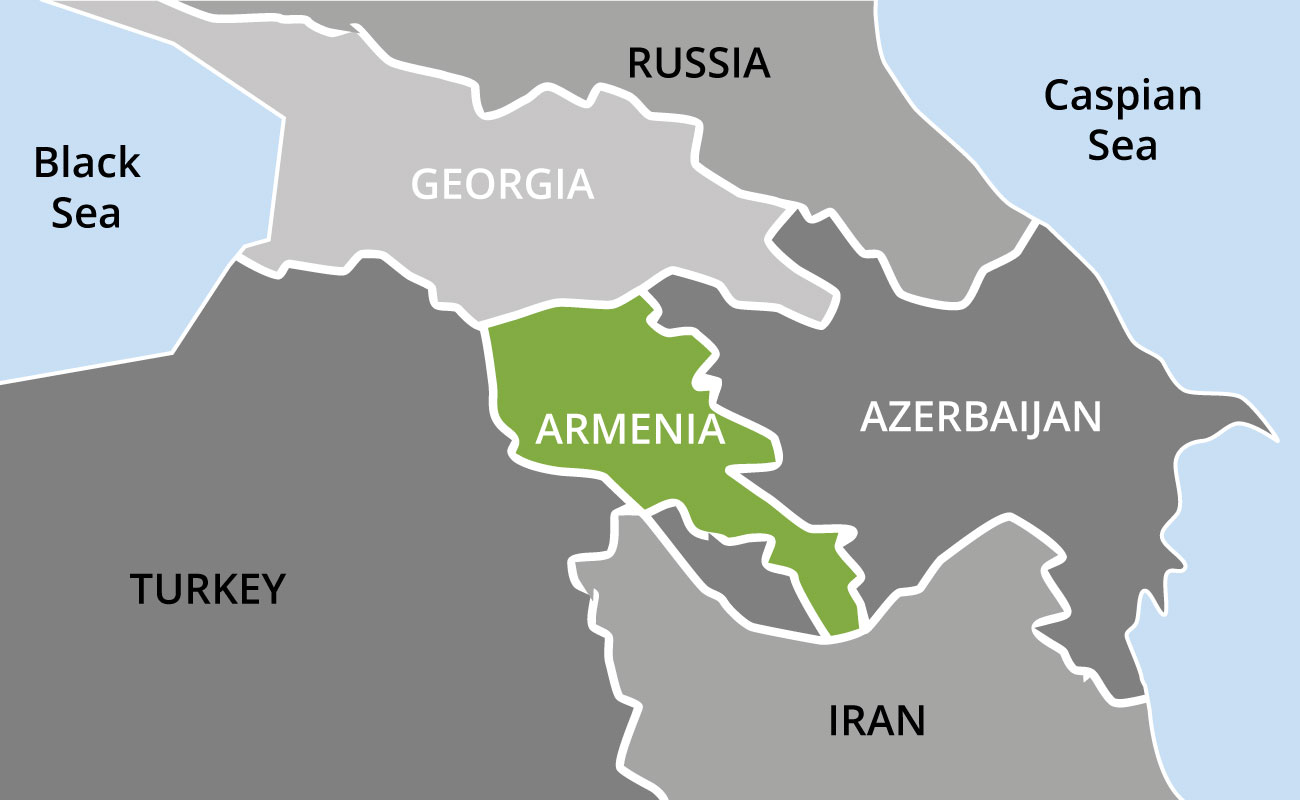
The Caucasus: Case Studies from Armenia and Georgia
Armenia: An Introduction
Armenia (Hayastan in Armenian) is a small, land-locked country bordered on the north by Georgia, to the east by Azerbaijan, to the south and west by Turkey, to the south by the Islamic state of Iran and an isolated Azerbaijani territory called Naxçivan. The Armenian Plateau is volcanic with many mountainous peaks, the highest of which is Mount Ararat, which is today part of Turkey. Mount Ararat is an extinct volcano that is northwest of Armenia's capital Yerevan. The seismic nature of the area has periodically destroyed many areas of Armenia, most recently in 1988.
The Armenian people trace their origins to the area surrounding Mount Ararat, where Indo-Europeans migrated at the end of the third millennium B.C. Modern-day Armenia comprises only a small portion of its original lands. Though Mount Ararat is not in Armenia, it is visible near the monastery Khor Virap, and it is symbolic of both Armenian origins and the conflict that continues to exist between Armenia and its neighbor Turkey. Armenians know themselves as Hye, which derives from the Biblical historical archer Hayk, grandson of Japheth, son of Noah.[3]Bruce M. Metzger and Roland E. Murphy, "Genesis 10:1," The New Oxford Annotated Bible (New York, Oxford University Press, 1994): 13. Armenia has had periods of independence, but throughout most of its tumultuous history, the Arabs, Byzantines, Mongols, Seljuks, Ottomans, Persians, Russians, and the Soviets have ruled it.
Following the dissolution of the USSR in 1991, Armenia became independent and renamed itself the Republic of Armenia. Armenia continues to have economic and political problems, particularly concerning its relationship with Turkey and its ongoing conflict with Azerbaijan over the Nagorno-Karabakh area.
The Armenians have a strong sense of identity, and re-establishing their homeland has never left their mindset. Much of this strong sense of "Armenianness" comes from their long-standing identification with the Armenian Apostolic Church, whose seat is in Holy Etchmiadzin. Armenia adopted Christianity in 301, when Saint Gregory the Illuminator converted King Tiridates III. The Armenians trace their Christian heritage to the Apostles S. Thaddeus and S. Bartholomew. Armenia, therefore, has the distinction of being the very first Christian state. Since the seventh century, the Supreme Catholicos (Bishop) in Holy Etchmiadzin has headed the Armenian Apostolic Church.





Kyrgyz kuus were passed along orally, but composers (as far back as the 19th century) are known by name.






